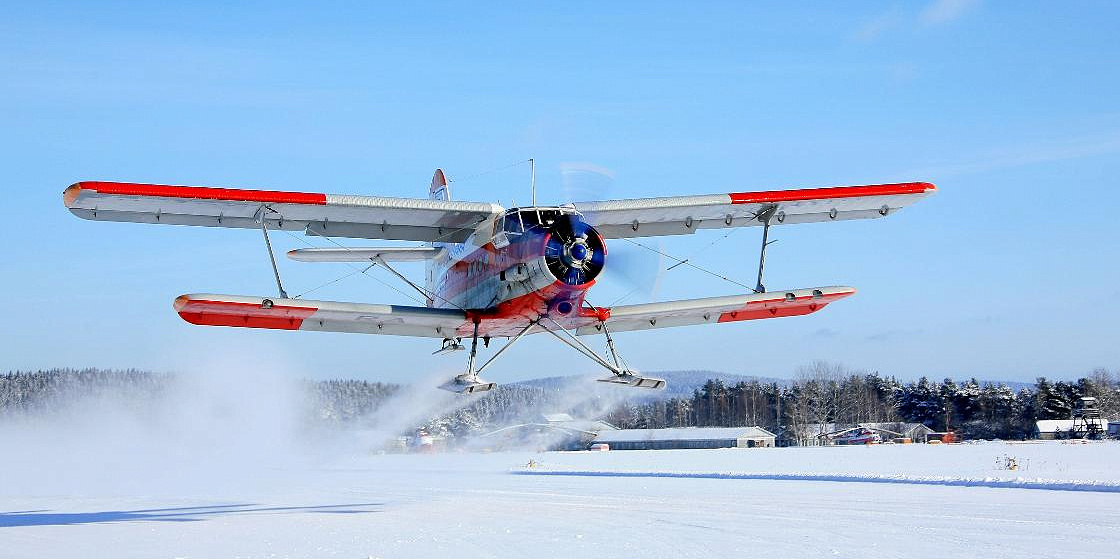
Photo: Bosarev Boris/GeoPhoto.ru
A New Flight Unit to Consolidate Arctic Expertise
Aerokhimflot, an alliance of small private airlines, announced its plans to establish an Arctic flight department. The plans were made public at an international seminar on the use of small aircraft in high latitudes held on 2-3 December in Moscow.
According to Aerokhimflot’s representatives, the Arctic unit will initially rely on An-2 and An-3T aircraft (both on wheel chassis and skis), as well as hydroplanes. These highly reliable heavy-duty aircraft are perfectly suited for the High North with its low temperatures and harsh climate. What makes them especially valuable in the Arctic is their ability to land on any kind of surface, including floating ice. The alliance officials believe that Aerokhimflot could meet the growing demand for transportation services in the Arctic, including delivery of goods to the most remote parts of the Russian High North.
The alliance intends to make a strong emphasis on accumulating expertise in and training personnel and flight crews for flight in the Arctic. To this end, Aerokhimflot is taking steps to attract the best pilots with vast experience in working in high latitudes. Work is underway to design a training ice field to be located in Krasnoyarsk Kray. In addition, an Arctic training course is being developed for a flight school launched under the auspices of the alliance.
This initiative is of considerable importance for the High North. Small airlines are crucial for ensuring steady development in the Arctic, as they help connect remote off-grid settlements scattered across the Russian North.
Arctic Today is a column by PORA CEO Alexander Stotskiy analyzing major international, national and regional events and trends in the Arctic.
According to Aerokhimflot’s representatives, the Arctic unit will initially rely on An-2 and An-3T aircraft (both on wheel chassis and skis), as well as hydroplanes. These highly reliable heavy-duty aircraft are perfectly suited for the High North with its low temperatures and harsh climate. What makes them especially valuable in the Arctic is their ability to land on any kind of surface, including floating ice. The alliance officials believe that Aerokhimflot could meet the growing demand for transportation services in the Arctic, including delivery of goods to the most remote parts of the Russian High North.
The alliance intends to make a strong emphasis on accumulating expertise in and training personnel and flight crews for flight in the Arctic. To this end, Aerokhimflot is taking steps to attract the best pilots with vast experience in working in high latitudes. Work is underway to design a training ice field to be located in Krasnoyarsk Kray. In addition, an Arctic training course is being developed for a flight school launched under the auspices of the alliance.
This initiative is of considerable importance for the High North. Small airlines are crucial for ensuring steady development in the Arctic, as they help connect remote off-grid settlements scattered across the Russian North.
Arctic Today is a column by PORA CEO Alexander Stotskiy analyzing major international, national and regional events and trends in the Arctic.
7 December 2021




